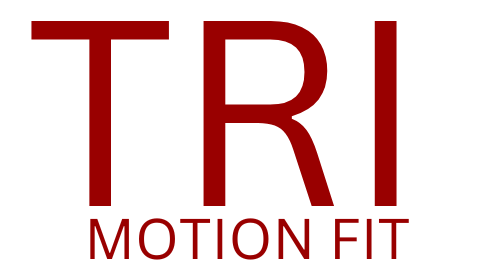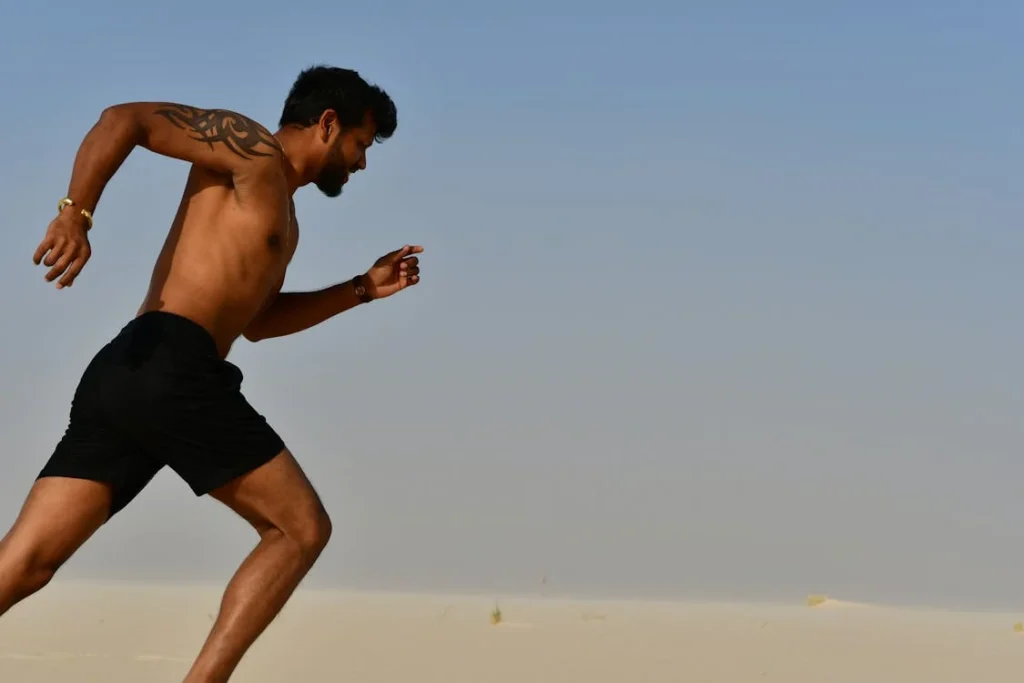It is a very simple movement, however, it contains endless health advantages. Regardless of whether you are a well-rounded marathoner or just a fitness lover, running provides a way to better health, weight management, stress relief, and an element of achievement. However, where do you begin? How are you supposed to figure out speed patterns, enjoy your body, and at the same time work hard to reach your goals. Rest assured, for both of the runners and the ones to be! This guide arms you with the best running tips and helps you overcome the pavement (or trail) confidently. We will discover pace strategies, train your body for running, and armor you with the rest of the knowledge for your running adventure to be enjoyable and sustainable.
Finding Your Pace:

It is the art of not going too fast or too slow.
It is the holy grail of running, the meeting point where you push hard without robbing yourself of your power. However, sometimes discovering the perfect rhythm can be hard, like trying to run blindfolded.
- The Talk Test: It is this simple method that helps your body be your guide. When you are running, you should be able to speak comfortably and without being breathless. If you find yourself gasping for breath and having problems talking, slow down. If you can sing to your favorite songs replace the tempo a bit.
- The MAF (Maximum Aerobic Function) Method: This technique bases on heart rate to calculate your training speed. A physician’s supervision is recommended usually, but the MAF method typically involves deducting one’s age from 180 and keeping your heart rate at that number through moderate-paced running.
- The Perceived Exertion Scale: This is an individual approach to assigning a number (usually 1-10) to what level of your effort you have reached. Level 1 is extremely low on the scale, while a 10 represents the highest level of difficulty. Focus on a range of 6-7 for the majority of your sessions, but include sporadic spurts of a higher intensity every once in a while.
- Start Slow, Gradually Increase: Above all, in the beginning, start slow and slowly upping the speed and distance are important because of injuries and forming a sustainable running habit.
Body Bliss:

Energizing Your Runs and Also Preventing Injuries Your body is your running machine and so caring for it is inevitable.
- Fuel Up: Nutrition is the linchpin. Focus on a well-balanced diet low in carbohydrates, but rich in sources of lean protein and healthy fats. Do not forget hydrating before, during, and after your runs.
- Strength Training is Your Friend: Putting a lot of effort and dedication into exercises such as squats, lunges, and strong core workout will greatly lower the possibility of injuries and enhance your general form of running.
- Recovery is Key: Contrary to popular belief, don’t underrate the importance of rest. Provide adequate rest days, implement stretching routines, and possibly not forget about getting regular massages to mitigate muscles soreness and promote recovery.
- Listen to Your Body: Pain is an indicator, not a privilege. If you suffer from pain that lasts a while, do take a rest, see the doctor, and tackle the problem now.
- Gear Up for Success: One should invest in good quality running shoes that fit properly and support the feet. Try to get them replaced between the range of 300 to 500 miles, and even before if they show signs of wear.
Beyond the Basics:

Beyond that, These are also necessary for a prosperous running. Running is not just a matter of putting your left foot in front of the one and right one.
- Find Your Tribe: Being with a friend or in a league can increase the motivation, especially during long runs. Additionally, it helps to stay safe and a great opportunity to belong.
- Mix it Up: Becoming a person with a habit is not good. Spice up your running routine by changing your route, running distance, and tempo with the goal of not hitting performance plateaus.
- Embrace the Elements: Flowing battles with nature belong to the running under the open sky. Seize the daylight, take a deep breath of the fresh air or a cold breeze or otherwise, gird your loins for your winter run (make sure you are dressed appropriately).
- Track Your Progress: To note your progress, make a log or use a running app to be able to commemorate the achievements, track just how you have progressed and keep you motivated. Bear in mind not to develop overly obsessive attitude about the numbers.
- Set Goals (and Celebrate Them!): Set goals because it will help you stay goal-oriented and effectively motivated. Make your goals realistic and possible and don’t forget to acknowledge any steps towards the set goal. Finishing a 5K?That’s awesome!I remember that I run for 30 minutes the first time without stopping…High five yourself!
- Embrace the Journey: Running is a life-long continuity. On some days there will be good runs and on others, there will be bad ones, fast and slow days. Enjoy the journey, appreciate the present, and embrace the huge sense of achievement that come with running a marathon.
Advanced Techniques:

Pushing Forward Your Running to the Next Level.
After you have been consistent with the basics of running and are now confident with your running routine, you may be ready to dabble into more advanced techniques to propel your performance and inspire yourself to come to your limits.
- Hill Repeats: This is a climb at a pace steeper than the usual in which you jog or walk down as recovery. What is worth highlighting is that hill repitition is crucial in order to build leg strength, power, and cardiovascular fitness.
- Interval Training: It involves switching between short-term high intensity exercises and recovery periods during the workout. Through interval training you can surpass the boarders of fitness and train your body to not be afraid of changing pace.
- Tempo Runs: Such back-to-back shorter runs at a comfortably hard pace (10Khr) will gradually increase your lactic threshold, which is the point from which the body produces many lactic acid. This in turn allows you to sustain a fast running pace which makes it possible to cover longer distances.
- Negative Splits: Such technique is achieved by the second half of the run being faster than the first half. It teaches how to overcome physical exhaustion and finish strong. Thus, it trains your mind and body.
- Mindfulness on the Run: While running can certainly serve as a kind of meditation. Dedicate your attention to your breath, to the sound of your feet hitting the floor, and to your body sensations. This is helpful as it boils down to improving concentration, relaxation, and overall running experience.
- Cross-Training: Having swimming, cycle or yoga classes included in your training plan may increase your overall fitness, prevent you from injuries and add some variety of the workouts.
Safety First:

Advice for safe running. Safety first is essential for running.
- Be Visible: Wear conventional or reflective materials, specially during low-light condition.
- Run in a Well-Lit Area: Opt for roadways that have good lighting, particularly if you’re a bit of an early bird or a night owl.
- Run Against Traffic: It gives you a visibility of the vehicles that are coming from the opposite side and react in time.
- Let Someone Know Your Plans: Let a friend or family-member know the route you plan to run and estimated return time, especially if you are running alone over a remote area.
- Carry a Phone: For such situations, when phone is fully charged, it lets you call for help if something bad happens.
- Be Aware of Your Surroundings: Try not to use headphones with high volumes, so at least you can be alerted to what is happening around you.
- Respect the Weather: Be careful when running during extreme temperatures or during unpleasant weather.
Running Gear:

More Than You Think
Having the best gears is arguably the most important aspect in being a successful runner and also an injury-free one.
- Moisture-Wicking Clothing: Sweat will not be accumulated rather it will dry up quickly and you remain dry as well. This is what makes you feel comfortable during your run.
- Sunscreen and Hat: You will need to be careful with the sun, especially on long courses.
- Hydration Pack or Belt: Having an attractive water bottle or choosing to wear a hydration pack would guarantee your hydration in jogging for a longer time.
- Running Socks: Invest in the brands of socks for running which have cushioning material along with moisture-wicking properties.
- Reflective Gear: Running in no light conditions? Try wearing reflective garments like vests, armbands, headlamps which make you more visible.
- Running Watch or App: Track your pace, distance, and time with a running watch or app whose role is to inform this information. Majority of them, on the other hand, consist of GPS tracking and other elements.
Running Resources:

Pumping Up Your Knowledge
Keep discovering, there’s even more to run the whole world!
- Running Magazines and Websites: There are so many publications and websites that list running tips, training programs, race tactics, and inspirational stories.
- Running Books: Think about books on running style, workout programme, running injuries or running for specific reasons like weight loss or marathon race.
- Running Podcasts: While on the go, listen to various podcasts with running specialists’ interviews, athletes, and coach – just to receive inside information.
- Running Youtube Channels: Lots of YouTubers offer running tips, show snapshots of their run training and cover other running-related topics.
- Running Coaches and Trainers: Think of employing a running coach or trainer to have one-on-one advice, training plans, and feedback to get to the best of your running potential.
Do not forget that running is the process, not its outcome. Embrace the whole process, be proud (even of small victories), and enjoy all the fantastic fitness and mental health benefits that come with running. Put on the shoes, step outside whether on the pavement, or the trail and keep discovering the world with each step.




